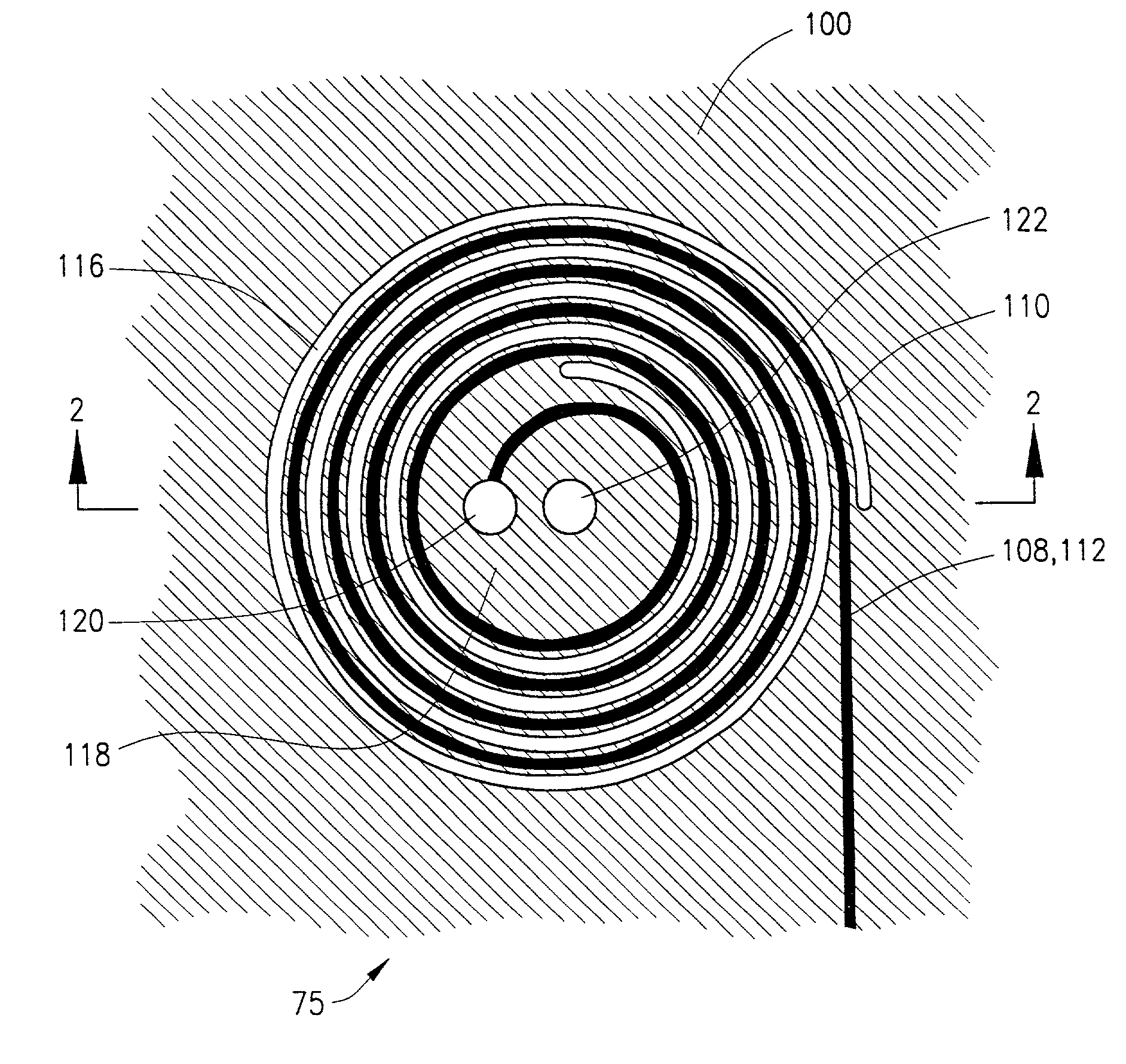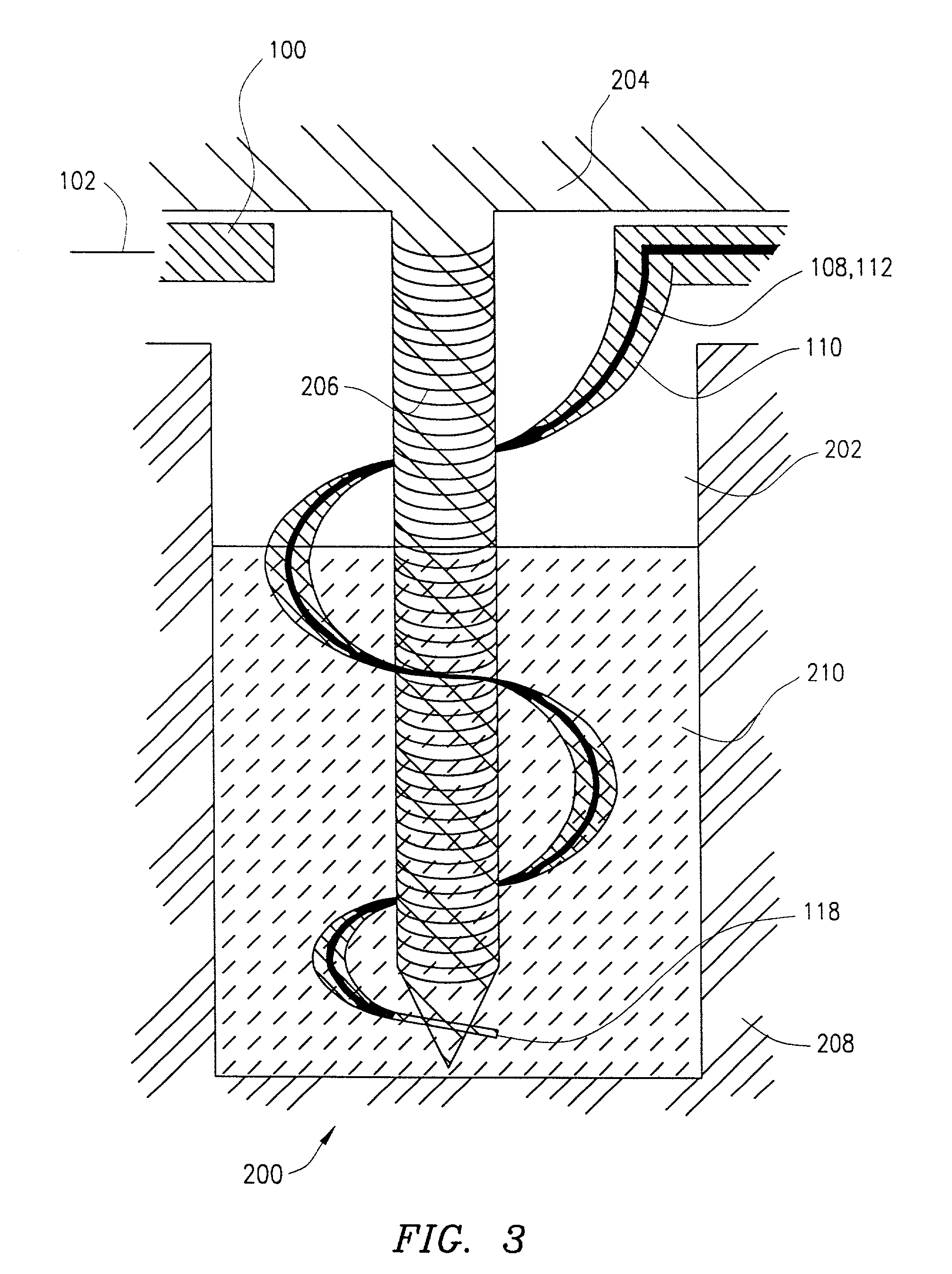Extensible spiral for flex circuit
- Summary
- Abstract
- Description
- Claims
- Application Information
AI Technical Summary
Problems solved by technology
Method used
Image
Examples
Embodiment Construction
[0028] Referring now to FIGS. 1 and 2, an exemplary flex circuit 75 is shown. Flex circuit 75 has a flex circuit substrate 100 that defines a plane 102 (visible in FIG. 2). Substrate 100 is formed from a base sheet 104 (FIG. 2) and a cover sheet 106 (FIG. 2). Base sheet 104 is a flat sheet of polyimide, e.g., a DuPont Kapton.RTM. H sheet. It is understood that various other materials can be used, such as paper, polyamide, polyester terephthalate (PET), random-fiber aramid (Nomex), and polyvinyl chloride (PVC). Metal foils and sheets can also be used either separately from electrical insulators where electrical insulation is not required or in conjunction with electrical insulators to provide improved structural characteristics. Base sheet 104 is about 50 .mu.m (micrometers) thick, but can have a thickness in a range of about 25 .mu.m (micrometers) to 1 mm. Cover sheet 106 is laminated to base sheet 104 to form substrate 100. Cover sheet 106 is a sheet of, e.g., DuPont Kapton.RTM. HK...
PUM
 Login to View More
Login to View More Abstract
Description
Claims
Application Information
 Login to View More
Login to View More - R&D
- Intellectual Property
- Life Sciences
- Materials
- Tech Scout
- Unparalleled Data Quality
- Higher Quality Content
- 60% Fewer Hallucinations
Browse by: Latest US Patents, China's latest patents, Technical Efficacy Thesaurus, Application Domain, Technology Topic, Popular Technical Reports.
© 2025 PatSnap. All rights reserved.Legal|Privacy policy|Modern Slavery Act Transparency Statement|Sitemap|About US| Contact US: help@patsnap.com



